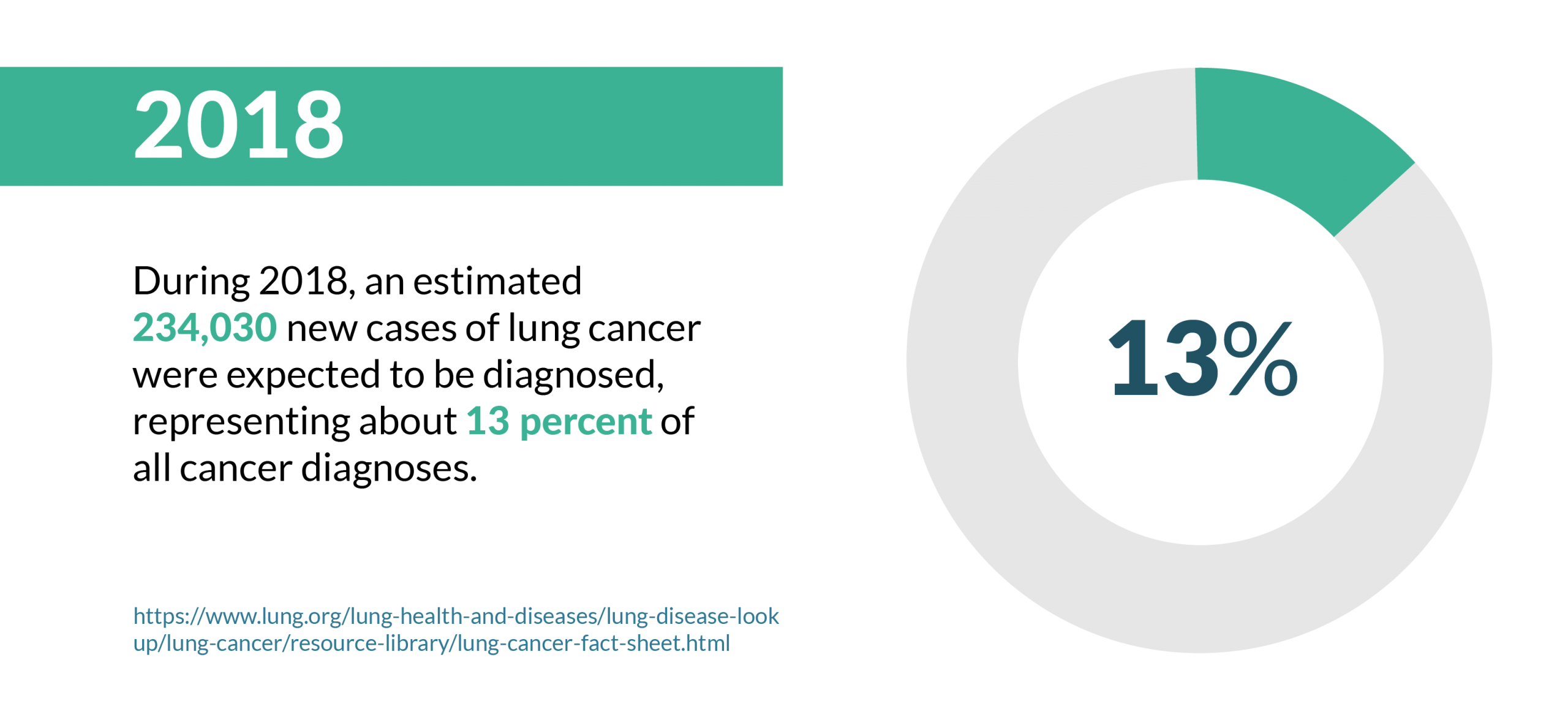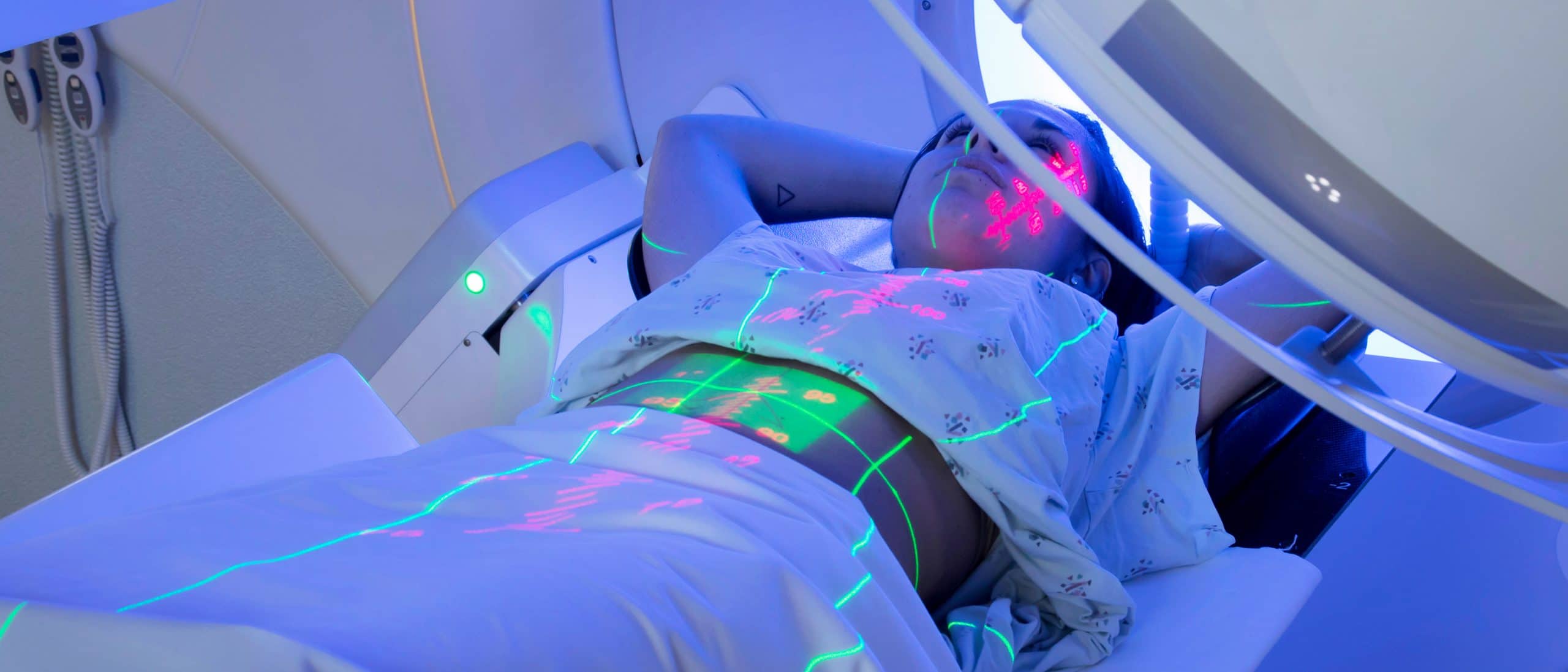Understanding a Lung Cancer Prognosis
A lung cancer prognosis is given to patients following a diagnosis of small or non-small cell lung cancer. A prognosis details probable developments in the course of the disease and the results of treatment.

What Is a Lung Cancer Prognosis?
A lung cancer prognosis gives a patient what doctors consider the most probable development(s) of the patient’s cancer. Typically, a prognosis is delivered following the diagnosis of tumors (in a majority of cases) as either small cell lung cancer (SCLC) or non-small cell lung cancer (NSCLC), and details the survivability and quality of life for patients.
Because prognosis is an estimation of how a disease will unfold, prognoses differ between people, and they can be improved or worsened. Moreover, a single prognosis may not accurately predict what will happen to the tumors or patients during the course of a patient’s treatment. For example, today, advancements in cancer care and treatment have lengthened expected survival times for patients following a cancer diagnosis.
Get the Help You Need
To receive a lung cancer prognosis, patients will need to undergo comprehensive medical testing. Typically, a specific cancer prognosis requires tests that return more detailed results and information than standard tests that merely detect the presence of cancer. Tests (such as certain blood tests and imaging scans) help oncologists determine the correct stage of a patient’s cancer. When doctors have accurately determined the precise stage of cancer, they can deliver a more reliable lung cancer prognosis to help direct a treatment plan.

In most cases, a combination of imaging and blood tests are done to determine the extent of the cancer’s spread. As such, certain tests are routine for cancer prognoses and some are done only to determine the primary course for treatment. Some additional tests you may need to determine your lung cancer prognosis include:
- PET scan: A positron emission tomography (PET) scan is a non-invasive imaging test that uses a radioactive tracer to highlight how tissues and organs are functioning. PET scans are often used to detect metastases (i.e. the spread of cancer).
- Integrated PET scan: An integrated scan involves combining PET and CT (computed tomography) scans into a single image. This scan presents better results for NSCLC than a PET or CT scan on its own. However, because this scan is more accurate at returning negative results than positive ones, its use may be limited by cost and availability.
- Bronchoscopy: A doctor (usually a pulmonologist) inserts a camera into the nose and down the throat to look at the lungs. Used when PET scan results are inconclusive.
- Mediastinoscopy: A camera with a cutting tool is used to observe and biopsy the space behind the breastbone, between the lungs. Used when PET scan results are inconclusive.
- Video-assisted thoracoscopic surgery (VATS): A camera and cutting tool are used to observe inside the chest wall. Used when PET scan results are inconclusive.
- MRI: Magnetic resonance imaging (MRI) scan provides cross-section images of organs and internal structures. Can be more accurate than other scans for some cancers and may be able to differentiate between malignant and benign tumors.
- HRCT: A high-resolution computed tomography (HCRT) scan looks at the area of the lungs that work the hardest: the alveoli and respiratory bronchioles. HCRT images use a CT scanner with a maximized resolution on a narrow portion of the original image.
- Lung biopsy: A biopsy is the surgical removal of material and observation with a microscope. Between two methods, open and closed biopsies, there are various types used to determine a prognosis.
What Is a Good or Bad Lung Cancer Prognosis?
When people discuss understanding a prognosis and whether a prognosis is good or bad, they are referring to the survivability of the diagnosis. As a rule, survivability (also known as the survival rate) signifies what percentage of people diagnosed with the same stage of cancer lived past a specified timeframe (typically, five years) following diagnosis. Among all cancers, the survival rate for lung cancer is low at 18.6 percent – compared to survival rates of 89.6 percent for breast cancer and 98.2 percent for prostate cancer.
In this light, a lung cancer prognosis might seem “bad” in general. Nonetheless, among the different types of lung cancer, some prognoses generally have higher survival rates than others. Below are the average 5-year survival rates for small cell and non-small lung cancer prognoses depending on their particular stage.
| Stage of Non-Small Cell Lung Cancer | 5-Year Survival Rate (% Alive 5 Years Later)* |
| Localized (cancer in one lung) | 61 percent |
| Regional (spread outside of lung or to lymph nodes) | 35 percent |
| Distant (further cancer spread to the brain, bones, and the other lung) | 6 percent |
| All Stages Combined | 24 percent |
Small cell lung cancer is a rare and more aggressive form of lung cancer. Subsequently, 5-year survival rates (based on diagnoses between 2009 and 2015) for SCLC are lower overall than NSCLC.
| Stage of Small Cell Lung Cancer | 5-Year Survival Rate (% Alive 5 Years Later)* |
| Localized | 27 percent |
| Regional | 16 percent |
| Distant | 3 percent |
| All Stages Combined | 6 percent |
*Based on the National Cancer Institute’s Surveillance, Epidemiology, and End Results (SEER) database for grouping cancers.
Using the Tumor, Nodes, and Metastasis (TNM) staging system, doctors may be able to give a more precise survival rate. TNM measures the size and/or the extent of tumors, whether or not cancer has spread to the lymph nodes, and whether or not cancer has metastasized (i.e. spread) to other areas of the body, as well as how much. The following TNM survival rates are based on a sampling of people who survived two and five years following an SCLC or NSCLC diagnosis.
| TNM Stage of Lung Cancer | 2- and 5-Year Survival Rates (percent) |
| Stage IA1 | 97, 90 |
| Stage IA2 | 94, 85 |
| Stage IA3 | 92, 80 |
| Stage IB | 89, 73 |
| Stage IIA | 82, 65 |
| Stage IIB | 76, 56 |
| Stage IIIA | 65, 41 |
| Stage IIIB | 47, 24 |
| Stage IIIC | 30, 12 |
| Stage IVA | 23, 10 |
| Stage IVB | 10, 0 |
In the U.S., lung cancer deaths have been declining for years. Concurrently, survival rates have increased slightly during the same time. Nonetheless, quality of life should be considered in addition to survival rates.
Prognostic and Predictive Factors for Lung Cancer
The prognostic numbers above are based on the state of the patient’s cancer when it was first diagnosed. An individual’s lung cancer may change, spread, or return, resulting in a change of prognosis and survival rate. Furthermore, factors such as a patient’s health, age, and how well the individual responds to treatment can alter a lung cancer prognosis. Too, advancements in cancer treatment therapies continue to improve a range of cancer prognoses and survival rates. For instance, even the American Cancer Society indicates that survival rates for lung cancer are higher than given numbers due to progress in treatment research. Below are just a few of the factors that affect a lung cancer prognosis.
| Prognostic Factor | Effect on Prognosis |
| Stage | Stage plays a major role in how good or bad a prognosis is considered. Lower stage diagnoses are considered more “favorable” than stages 3 and 4. |
| Metastasis | The less cancer has spread throughout the body, the more favorable is its effect on its prognosis. |
| Weight loss | Patients that have lost more than 5 percent of their total body weight prior to cancer treatment typically have less favorable prognoses. |
| Performance Status (PS) | PS refers to the ability of an individual to carry out their daily routine. Those who can are more likely to have better prognoses. |
| Sex | Statistically, women have better lung cancer prognoses than men. |
| Lung illness | Patients with lung illnesses or disorders (such as pneumonia, fluid buildup, or a collapsed lung) generally have worse prognoses than those without them. |
Other factors that influence a patient’s lung cancer prognosis include predictive factors. Predictive factors affect how well a patient’s cancer will respond to a particular treatment. These factors are then used by a cancer care team to develop targeted therapies. Predictive factors like genetic markers can indicate which treatments are more likely to be effective against the patient’s type and stage of cancer. Genetic markers are certain mutations among the genes of cancer cells; doctors use these markers to make a treatment plan with proven, targeted cancer treatment therapies. Hence, the presence of some genetic markers can mean a more favorable prognosis for the individual.
What Now?
Receiving a lung cancer prognosis – good or bad – can feel overwhelming, especially if the diagnosis is the result of corporate negligence. Fill out a free case evaluation form for more information on your rights to making a financial claim through the legal system.


